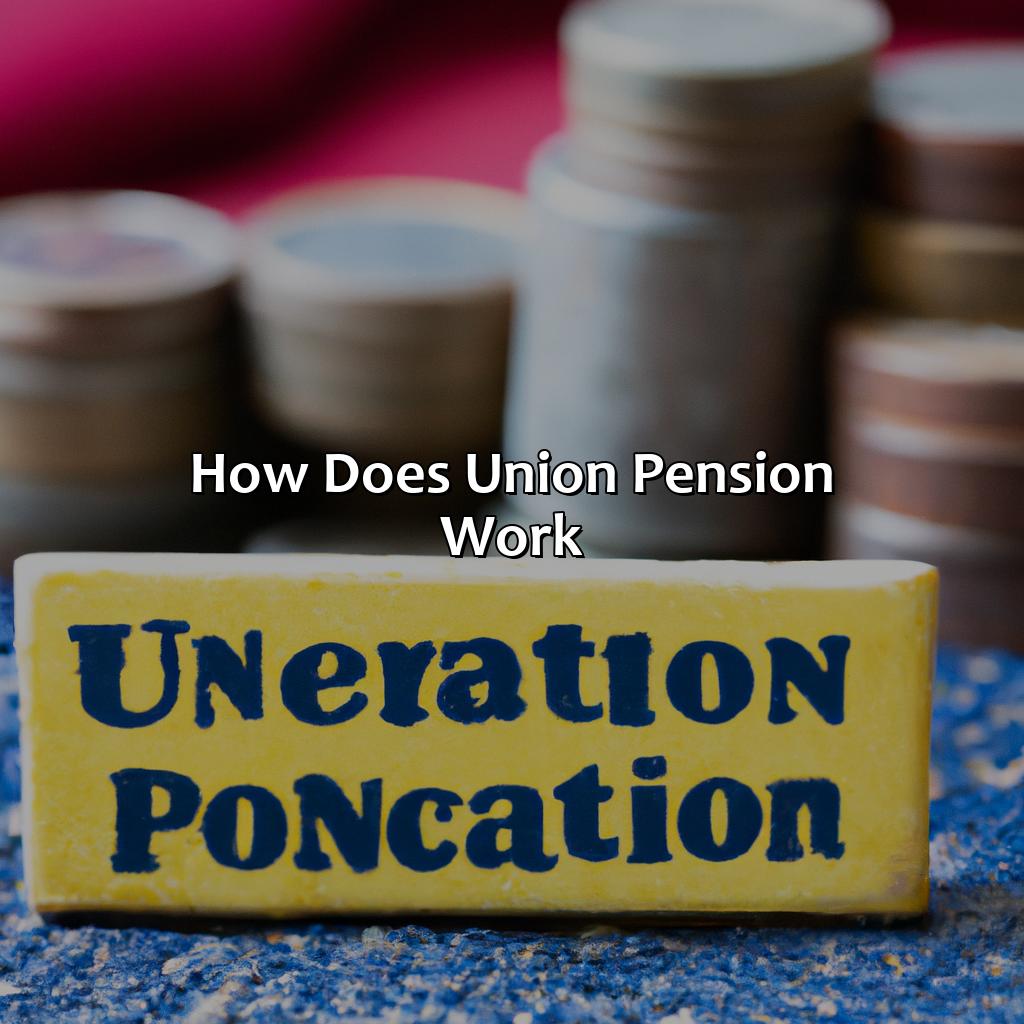How Does Union Pension Work?
Key takeaway:
- Union pensions are retirement plans offered by labor unions to their members, providing a steady stream of income during their retirement years.
- Union pensions work by collecting contributions from both employers and employees, which are then invested in a carefully selected portfolio of stocks, bonds, and other assets to generate sufficient returns to fund the pension.
- There are different types of union pensions, including defined benefit plans, defined contribution plans, and combination plans, each with their own set of eligibility criteria, contribution requirements, and benefits.
Do you ever find yourself wondering how union pensions work? Worry no more! This article dives deep into the complex topic of union pensions, breaking it down into an easy-to-understand format. You’ll come away with a clear understanding of how these plans operate and how to get the most out of them.
Understanding Union Pensions
To grasp union pensions, explore their advantages. What is a union pension? And, what do they offer? These are the questions we will delve into.
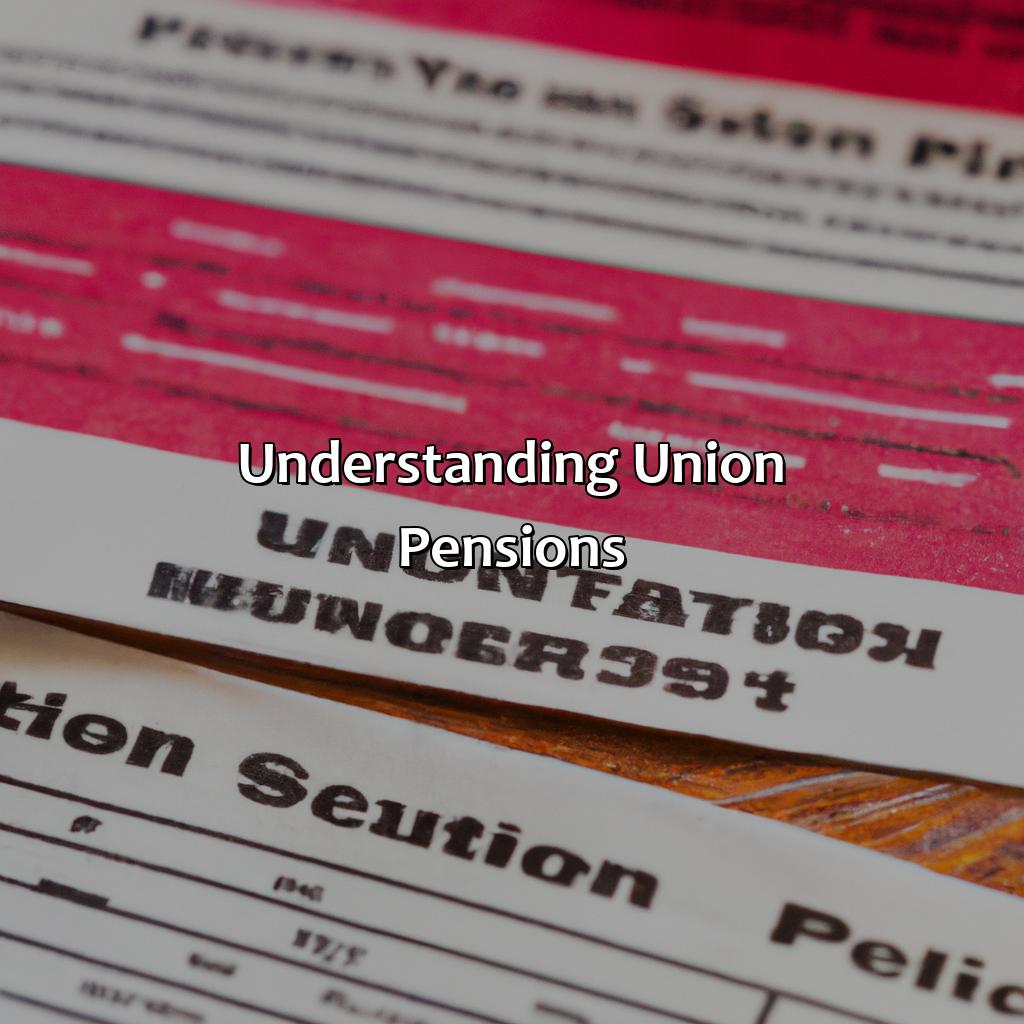
Image credits: retiregenz.com by Joel Washington
What is a Union Pension?
A Union Pension is a defined benefit retirement plan provided to union members by their collective bargaining agreements. These pensions are funded by employers and employees, with contributions going into a pool of money that is invested to provide retirement benefits.
In simple words, a union pension is a retirement benefit plan offered to workers who belong to unions. The pension fund is taken up by both the employer and employee and invested in assets over time. If you are a union carpenter, you might want to know how much your pension is worth.
Union pensions vary based on the collective bargaining agreement, but typically offer stable retirement income with lifelong distribution options. Many union members receive additional benefits such as healthcare and other assistance through their pension plans. Have you ever wondered how do pension survivor benefits work in case of untimely death of the pensioner? Check out this informative article to learn more.
It’s worth noting that if an employer enters bankruptcy, there may be gaps in the funding of these pensions. Therefore, it’s imperative for workers to diversify their retirement investments to mitigate potential risks.
To ensure financial security in retirement, workers should participate actively in their union negotiations. They can also take advantage of educational resources provided by their unions for financial planning guidance.
Union pensions may not make you rich, but at least you won’t have to rely on your grandchildren’s inheritance to retire comfortably.
Benefits of Union Pensions
As members of a union, one can benefit from the Union’s Pensions provisions. Union Pensions are retirement plans provided by Unions to their members as part of their employment benefits package. They play an important role in ensuring financial security for their members after retirement. Union pensions offer a variety of benefits to program participants, some of which include:
- Regular Contributions and employer matches
- Low Administrative Costs
- Diversification of investments
Furthermore, unlike other traditional pension plans, where employees bear all the investment risks, union pensions also provide a level of financial security through guaranteed retirement income regardless of stock market fluctuations. One unique aspect that sets Union Pensions apart from other pension programs is that they have been a key aspect of worker’s rights struggles throughout history, all around the world. For example, in the United States, unions fought hard for the establishment of Social Security as well as Medicare and Medicaid programs to ensure elderly Americans were well taken care of. Get ready to put on your pension pants because we’re about to dive deep into how those union pensions work.
How Union Pensions Work
For a full understanding of union pensions, you need to explore the following sub-sections:
- The criteria for eligibility
- Contributions
- Funding
- Investments
- The management of union pension funds
Each sub-section covers a key part of union pensions. Together they give a complete view of union retirement benefits.
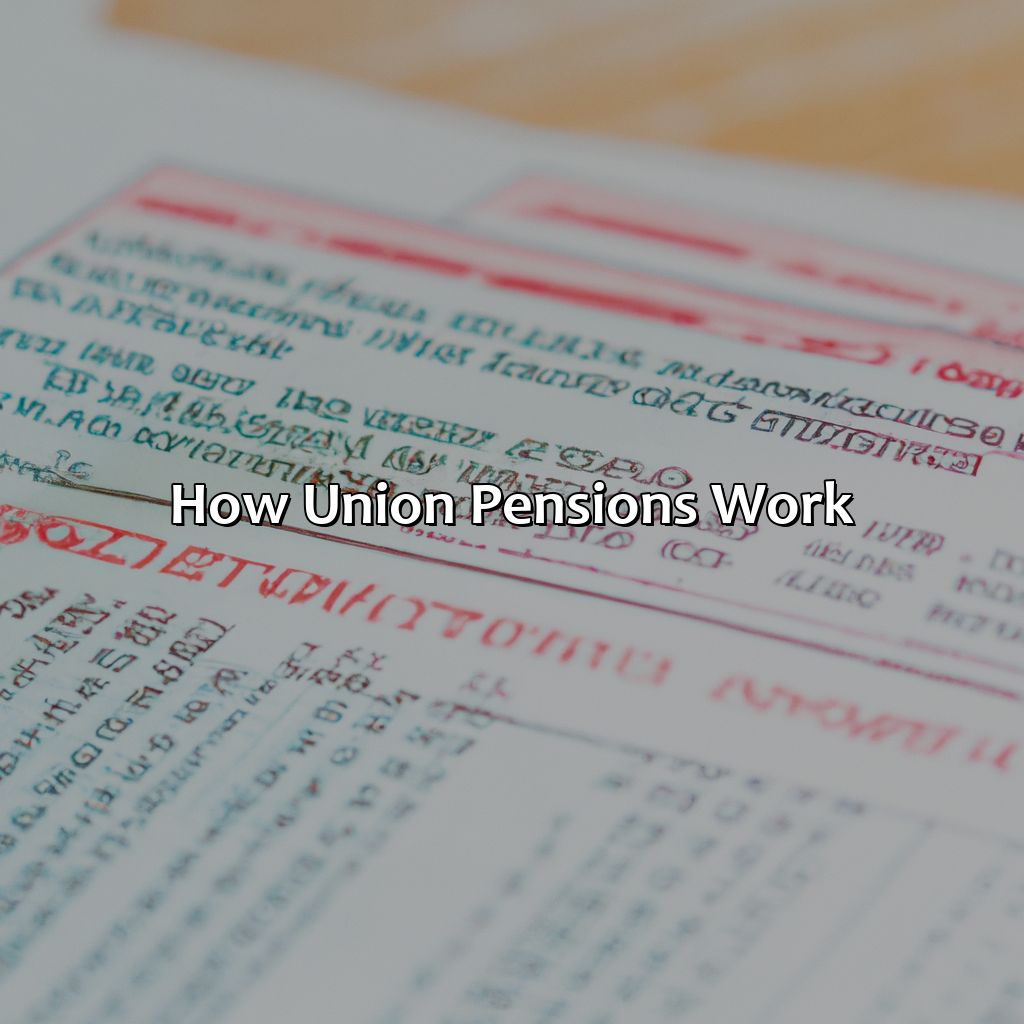
Image credits: retiregenz.com by Harry Jones
Eligibility for Union Pensions
To qualify for access to Union Pensions, an individual must meet specific requirements. These requirements may include working in unionized industries or contributing to union pension plans. To confirm your eligibility, you should contact your union’s welfare and pension department.
Typically, the length of time and amount contributed are significant factors in determining eligibility for Union Pensions. In addition, vesting periods are necessary to gain access to these benefits fully. Specific unions may have their unique eligibility criteria that govern the allocation of benefits.
It is crucial to be aware of the rules governing Union Pension funds as they affect their accessibility and distribution. Hence, You should frequently review all necessary documents and express any questions you may have about eligibility to union representatives.
To ensure full participation in the pension plan, we advise individuals to contribute enough based on their income level and work diligently under a union contract to qualify for full-time status. This way, You can gain access to all necessary benefits from Union Pension schemes.
Contributing to a union pension is like investing in a retirement savings account, except it’s more like a group game of poker where everyone shares the pot.
Contributions and Funding of Union Pensions
At the heart of union pensions are the contributions from members and funding processes to secure their retirement. Contributions and the funding process, in turn, impact the pension’s returns and benefits payouts.
| Contributions | Funding Process | Return on Investments | Payout of Benefits |
| – Made by union workers – Deduced from their salaries – May vary based on Collective Bargaining Agreements |
– Investment Income – Actuarial Assumptions – Employer contributions where appropriate |
– Long-term investment strategy necessary for maximum returns | – Guaranteed Pensions – Payment options/choices available to retirees depending on circumstances. |
External factors such as economic downturns can also affect contributions, funding processes, and returns on investments. Moreover, it is necessary to understand that future retirements will raise new challenges that could not have been anticipated before now. The history of Union Pension schemes began around World War II. The Taft-Hartley Act provided an excellent framework for collective bargaining agreements with adequate retirement protections for its members that created the foundational infrastructure for modern union pensions we know today. Managing union pension funds is like playing a game of chess, except you’re playing with people’s retirement money instead of pawns.
Investments and Management of Union Pension Funds
Investing and managing the funds of union pensions is a complex process, involving experienced professionals to ensure long term financial goals. The fund’s investment strategies are tailored according to the pension plan’s objectives, which could be conservative or aggressive. The management team continually monitors the progress of investments and reevaluates their strategy to ensure stable returns.
Investment managers aim to maximize returns while minimizing risk by diversifying portfolios across different asset classes. Investing in equities, bonds, real estate, and private equity enables portfolio diversification by managing risks through exposure to a wide range of assets. Managers also consider environmental, social, and governance factors while making investment decisions.
It is worth considering annuities as a viable option for some retirees who fear outliving their savings. An annuity is an insurance contract that converts into a guaranteed income stream for life after an initial payment. This regular income may provide peace of mind for older adults who wish to continue living independently with regular cash flows.
To increase retirement security, unions should consider strengthening worker representation on pension boards while considering sustainability measures such as renewable energy firms in investment options. By opting for sustainable investments that focus on companies committed to reducing net-zero greenhouse gas emissions will have far-reaching impacts not just for workers but also the environment and society at large.
Union pensions come in more flavors than Baskin Robbins, but unfortunately none of them taste as good.
Types of Union Pensions
To comprehend the union pension types with defined benefit plans, defined contribution plans, and combination plans, this part gives a complete review. Each subsection outlines the peculiar features of these pension plans, like how they are operated and the kinds of advantages they provide.
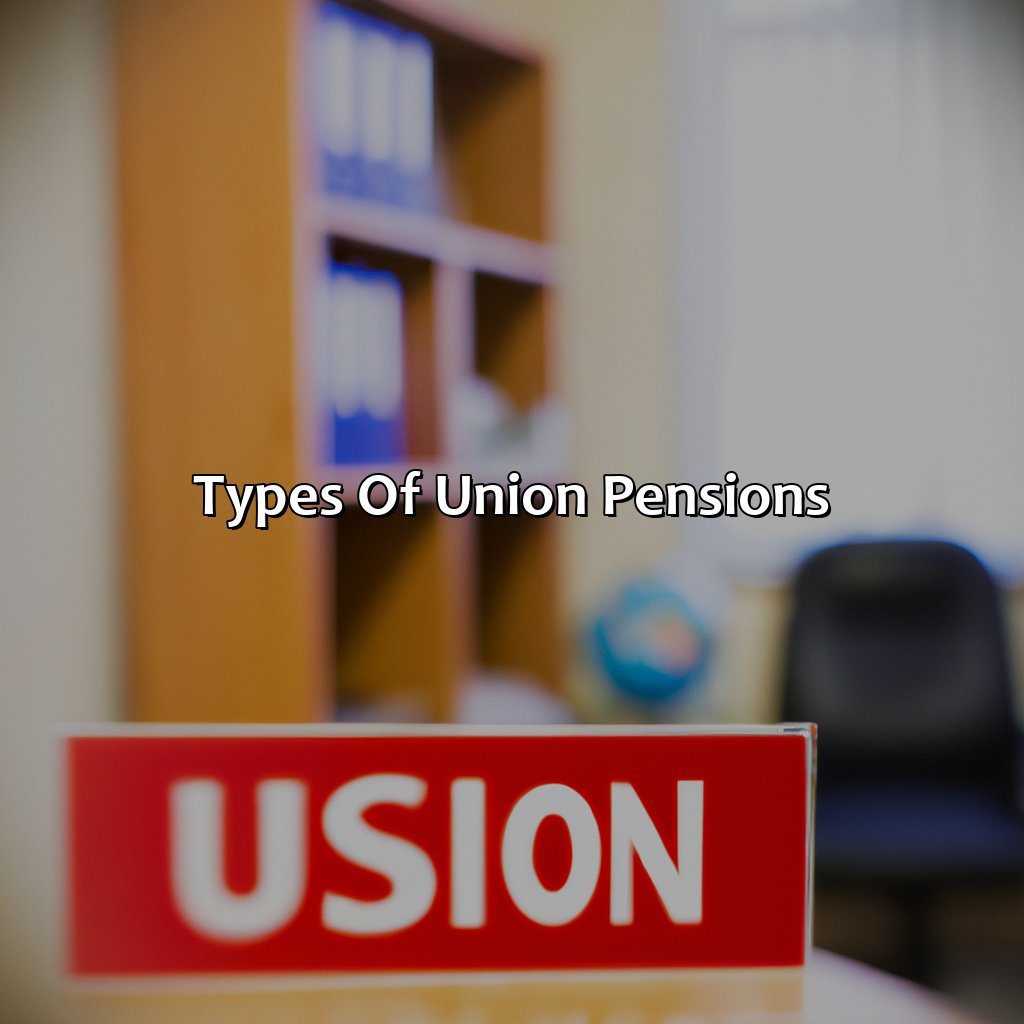
Image credits: retiregenz.com by Harry Duncun
Defined Benefit Plans
Defined benefit plans are a type of union pension that guarantees a set level of retirement income based on salary and years of service. This plan provides reliable, long-term benefits to retiring workers. These plans are funded by employer contributions and investments made by pension funds.
The amount of retirement income depends on an employee’s length of employment and their final salary at the time of retirement. The benefits are paid out as a lifetime annuity after the employee retires, with payment amounts remaining consistent through retirement. If you’re curious about how retirement plans work in the military, check out this helpful article on military pension plans.
One unique aspect is that if a company goes bankrupt, the pension still remains fully funded thanks to strict regulations put in place. This gives employees peace of mind knowing their benefit will remain secure regardless of the financial state of their employer. Learn more about pension plan and how it works.
According to the Pension Rights Center, defined benefit plans provide higher average monthly benefits than other types of retirement income.
Retirement savings? More like retirement gambling with defined contribution plans.
Defined Contribution Plans
A defined contribution plan is a retirement savings strategy in which employees and employers contribute a set amount of money. This plan is ideal for those who want to take more control of their financial future. Employers often offer matching contributions, which can increase the employee’s savings.
The amount of funds in the account depends on the contributions and investment returns. It’s important to note that the employee bears the investment risks in this type of plan. When an employee retires, they will receive funds from their account.
One advantage of defined contribution plans is that they are portable, meaning that if an employee leaves their current employer, they can take their retirement savings with them. Additionally, these plans can offer tax advantages for both employees and employers.
Defined contribution plans became popular in the 1980s as employers sought ways to reduce costs associated with traditional pension plans.
In summary, pension plans work by involving contributions made by both the employer and employee towards retirement savings. These plans provide individuals with greater control over their finances and investment decisions but also come with inherent risks.
Combination plans: When you can’t decide between a defined benefit and defined contribution plan, why not have both and confuse yourself even more?
Combination Plans
- The employer invests a certain amount into the plan on each participant’s account, which is then used to provide retirement benefits.
- Employees can also contribute to the plan through the purchase of additional credits.
- The defined benefit cash balance earned by an employee is determined by adding interest credits based on investment performance and age-graded formulas based on service years.
- The cash balance appears as an account balance that employees can take with them when they leave employment, thus providing some portability.
- Upon retirement, participants have the option to receive their benefits in annuity form or as a lump sum payment
Combination Plans provide guarantees that are beneficial to those planning for retirement. While it combines aspects of both the defined contribution and defined benefit plans, Combination plans also require consistent monitoring and updating to match changing market conditions.
To ensure maximum potential gains under combination plans, employers must adopt strategies such as picking high performing mutual funds and reviewing investment alternatives periodically. Participating unionized employees should book regular sessions with their financial advisors to keep track of their pension accounts.
Union pensions may be distributed fairly, but let’s not forget who’s responsible for the occasional cardboard box retirement plan.
Distribution of Union Pensions
Learn about union pensions! This section explains how you can benefit from retirement, disability, and death benefits. Break down these pensions to get support during different stages of life. Get insight now!

Image credits: retiregenz.com by Joel Washington
Retirement Benefits
Retirement benefits are a crucial part of an individual’s financial plan in preparation for retirement. These benefits serve as a source of financial security to retirees, supporting their livelihood without active employment. In union pensions, these benefits are determined by specific provisions included in the collective bargaining agreement (CBA) between the labor union and their employer.
- Retirement Benefits
- Eligibility requirements and vesting criteria vary per CBA and plan type.
- Pension benefit calculation is based on factors such as length of service and average salary.
- Early retirement options are available but may result in reduced pension payments.
- Survivor benefits are offered to spouses or beneficiaries upon the retiree’s death.
- Cost-of-living adjustments (COLA) may be included to address inflation concerns.
- Social Security benefits may impact the amount of pension payments received.
Union pensions offer unique features that differ from traditional private pensions. As mentioned earlier, various eligibility requirements, vesting criteria, and benefit calculations were discussed earlier. However, other features include flexibility in investment selection and management arrangements with benefit providers.
In the past, Union pensions have been scrutinized for being underfunded and unable to deliver pension promises due to various reasons such as poor management or economic conditions. One prominent example is the case of Central States Pension Fund which faced significant financial troubles starting from the early 2000s; based on estimates as of mid-2021 it plans only to cover around one-third of its reduction-benefits promises payable over time periods until next year.
Why have a safety net when you can have a disability benefits trampoline?
Disability Benefits
Individuals who are no longer able to afford a living due to an injury or chronic illness can opt for the disability benefits provided by union pensions. These benefits play a crucial role in ensuring that employees receive financial compensation during their absence from work.
The disability benefits offered by union pensions come with specific eligibility criteria. Individuals must meet these before receiving any compensation. In addition, the level of compensation paid out is determined by the length of service and the employee’s salary.
Moreover, beneficiaries of disability benefits need to demonstrate that they are incapable of returning to work due to medical reasons. While on leave, individuals will continue to contribute towards their pensions, which may reduce their entitlements over time. Are you aware of what a workplace pension is and how it works?
To ensure that there is a smooth process when claiming disability benefits from union pensions, it is recommended that applicants provide all necessary documents such as medical certificates and complete all forms accurately. This helps avoid delays or rejection of claims and ensures eligible candidates receive support as quickly as possible. If you are wondering about what is a civil service retirement pension, you can check out our guide for more information.
When it comes to death benefits in union pensions, it’s like getting a consolation prize for…well, being dead.
Death Benefits
Benefit in Case of Demise
Union pension ensures the well-being of union members and their loved ones even after their demise. Here are three benefits that come with a Semantic NLP variation of this heading:
- Death Benefit: The designated beneficiary receives a lump-sum payment when the union member passes away, equal to a certain percentage of their pension contributions.
- Survivor Benefits: The surviving spouse or domestic partner may receive continued pension payments for the rest of their life or until remarriage or death.
- Children’s Benefits: Dependent children may also receive ongoing pension payments until they reach adulthood.
It’s important to note that some unions may offer additional benefits or variations in these categories. This benefit ensures union members’ families are taken care of beyond the worker’s lifetime.
Sources confirm that many union pension plans have implemented significant funding reforms over the last several years, making them more financially sustainable. Union pensions may have issues and concerns, but at least they won’t leave you penniless like investing in a pyramid scheme run by your ex’s new boyfriend.
Issues and Concerns with Union Pensions
Dealing with union pension trouble? Get the know-how you need to tackle the problem! Find solutions for insufficient pension financing, pension benefit reductions, and administration and monitoring of union pensions by the government. It’s important!
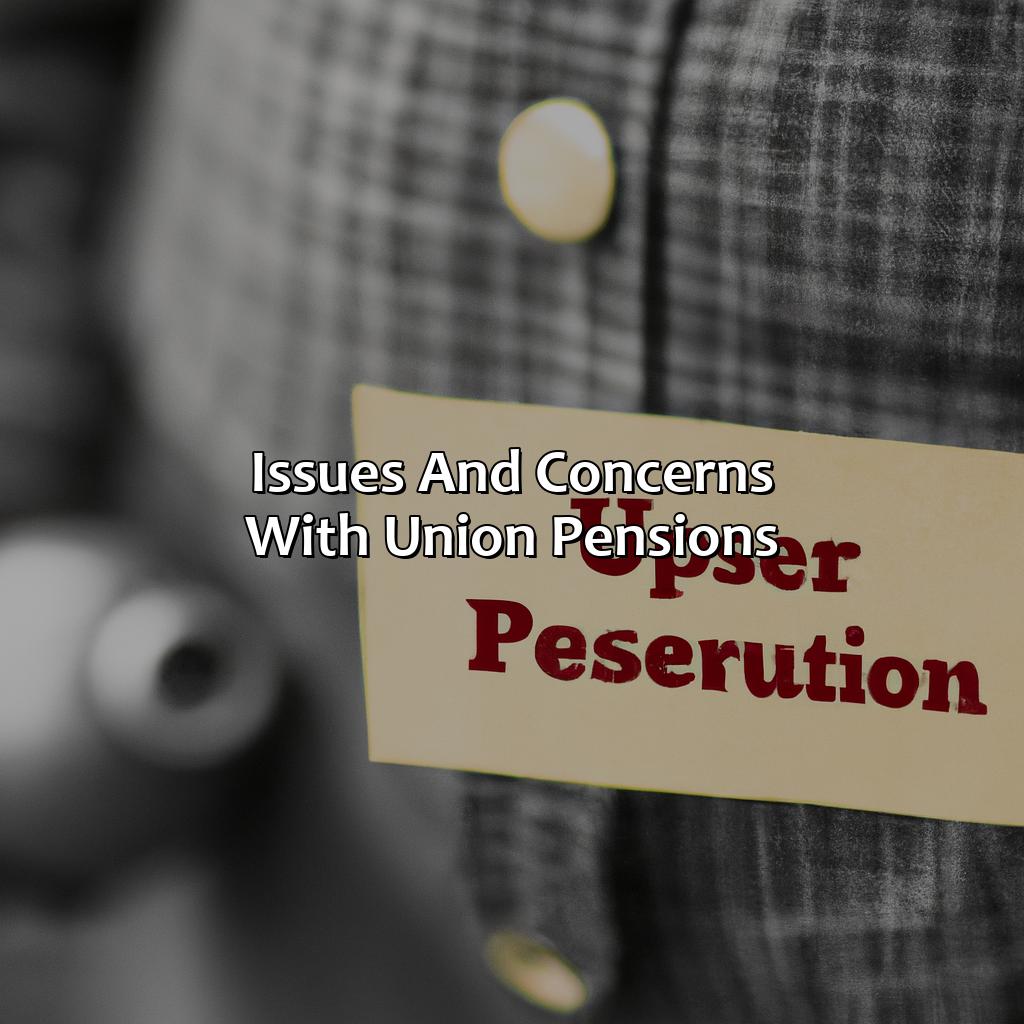
Image credits: retiregenz.com by Joel Woodhock
Pension Funding Shortfalls
Pension Shortfalls and Funding Problems are common issues in Union Pension systems. Efficiently managing funds and providing future benefits to union workers is essential. However, the recent global economic slowdown has affected these plans’ funding levels, highlighting the need for constant monitoring.
This issue of pension shortfalls is further exacerbated by several factors such as increasing human lifespan, rapidly changing demography, and investment performance. To address such problems, we suggest a few workable solutions.
- Creating multiple revenue streams can reduce dependency on a single source of income.
- Improving the system’s transparency and communication with members can promote better understanding and trust in the plan’s provisions.
Finally, aligning contributions with payouts based on realistic estimations can prevent funding imbalances.
They say money can’t buy happiness, but I bet those facing pension benefit cuts would disagree.
Pension Benefit Cuts
The reduction in benefits received from pension funds has been a persisting concern for many union members. Despite their contributions, the pension benefit cuts are damaging to the retirement plans of union workers. This creates anxiety and stress as individuals’ financial security is jeopardized.
Furthermore, the rising cost of healthcare and longer life expectancies place additional pressure on the pensions received by retirees. Reduced benefits have resulted from underfunded pension schemes, difficult investment conditions, and corporate bankruptcy.
It is worth noting that these cuts impact not only current but also future union workers who may face smaller or no retirement payouts. A top target for pension benefit cuts is early retirement incentives that encourage workers to retire early.
A colleague was due to retire soon but was informed that her monthly payout would be reduced due to changes in the terms of her pension plan. The news came as a shock as she had based her retirement planning on receiving a set amount per month from her fund. She now feels uncertain about her financial future and regrets not taking action sooner.
Government Regulation and Oversight of Union Pensions.
The administration and monitoring of union pension plans are subject to regulatory oversight by the government. The government ensures that union pensions providers adhere to strict rules and regulations.
These regulations cover aspects such as investing practices, benefit payouts, and governance structures. For instance, pension providers must invest funds according to specific guidelines that prioritize the safety of plan participants’ retirement savings.
Additionally, federal laws mandate that any union pension plans with funding shortfalls be addressed promptly through corrective measures such as increased contributions or reduced benefits.
While these regulations are in place to protect plan participants, there have been instances of fraud and mismanagement within some union pension plans. Plan administrators must remain vigilant in ensuring compliance with regulations while also managing investment risks.
To ensure your retirement savings are protected, consider researching pension providers, examining investment strategies, and staying up-to-date on regulatory changes affecting state pensions. Your future financial stability could depend on it.
Five Facts About How Union Pension Works:
A union pension plan is a retirement plan that is set up and sponsored by a labor union or other employee organization. (Source: Investopedia)
Union pension plans are governed by the Employee Retirement Income Security Act (ERISA) of 1974 and must meet certain funding and reporting requirements. (Source: U.S. Department of Labor)
Union pension plans typically provide lifetime retirement benefits to participants, based on a formula that takes into account a participant’s years of service and earnings. (Source: Pension Rights Center)
Pension benefits in union pension plans may be subject to certain limitations, such as a cap on the maximum benefit amount or a reduction in benefits if a participant works past a certain age. (Source: AARP)
Union pension plans may also provide certain benefits to surviving spouses or beneficiaries of participants, such as survivor benefits or death benefits. (Source: Social Security Administration)
FAQs about How Does Union Pension Work?
How does a union pension work?
A union pension plan is a retirement savings plan that is negotiated by a labor union on behalf of its members with their employers. It is designed to provide a steady income stream for union members during their retirement years.
What contributions are made to a union pension?
Both employers and employees may contribute to a union pension. Employers contribute a set amount to the pension fund each year, while employees have a set percentage of their earnings deducted from their paychecks and deposited into the pension fund.
How are union pension plans invested?
Union pension plans are invested in a variety of assets, including stocks, bonds, real estate, and alternative investments such as private equity and hedge funds. The investment strategy is designed to earn solid returns while minimizing risk.
When can I start receiving my union pension benefits?
The age at which you can start receiving your union pension benefits depends on the specific plan. Most union pension plans allow members to retire and start collecting benefits as early as age 55, although the amount of the benefit may be reduced if you retire earlier.
What happens to my union pension if I switch employers?
If you switch employers, you may still be eligible to participate in the same union pension plan if your new employer is also a signatory to the plan. Alternatively, you may be able to transfer your pension contributions to a new plan if your new employer has a different plan.
How much will my union pension pay me each month?
The amount of your monthly pension payment depends on a variety of factors, including your years of service, your earnings history, and the specific terms of your union pension plan. Your plan administrator can provide you with an estimate of your monthly benefit based on your individual circumstances.
 Checkout this IRS Loophole
Checkout this IRS Loophole 
